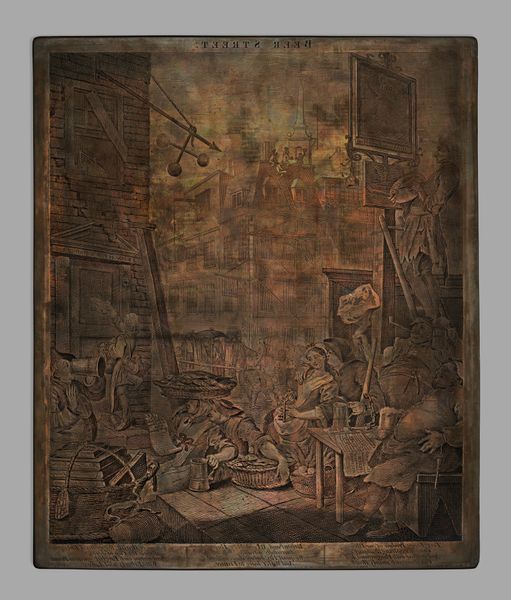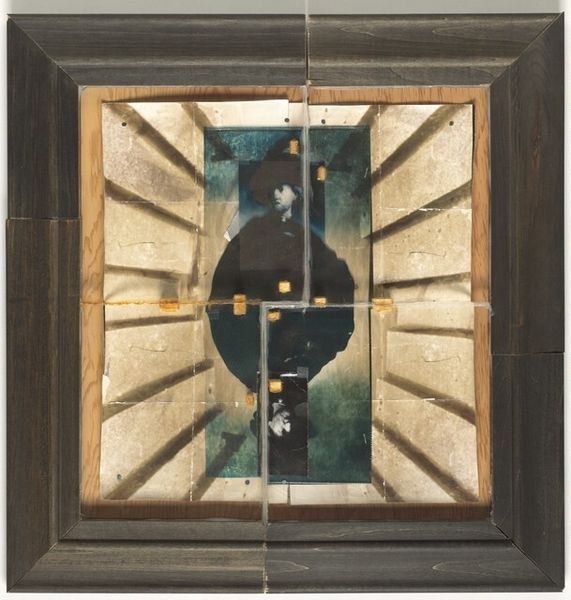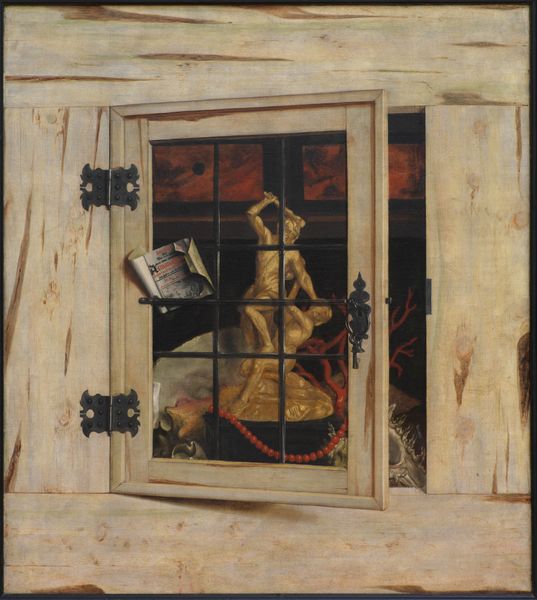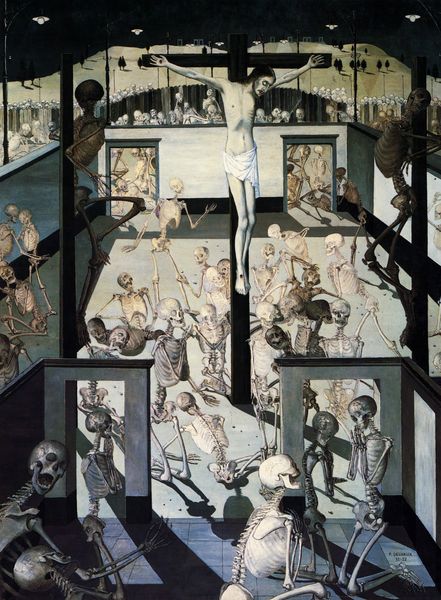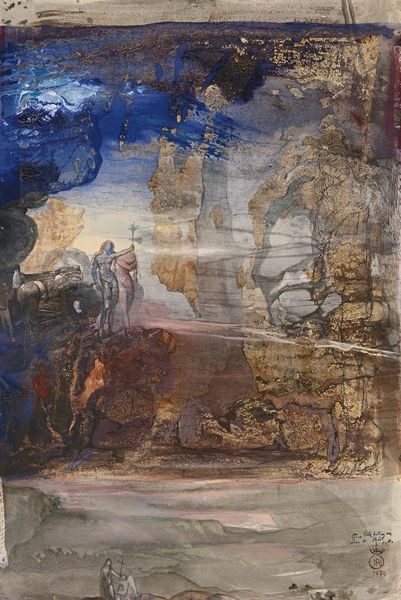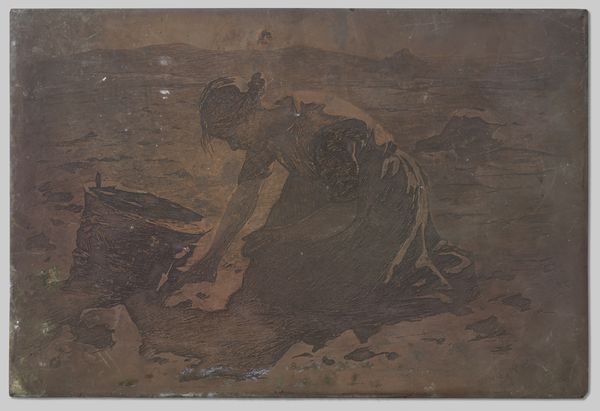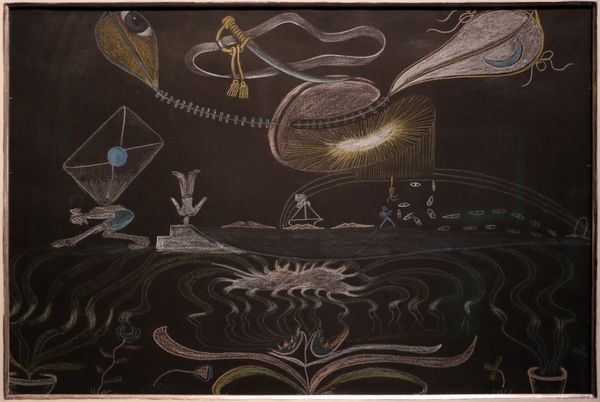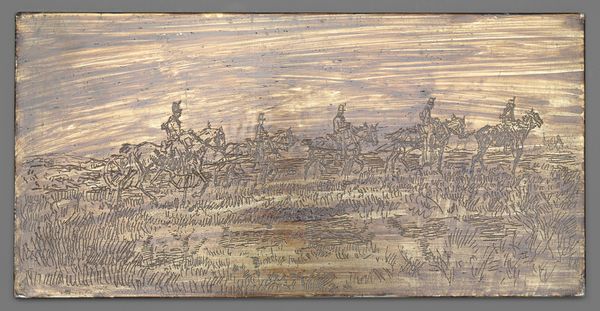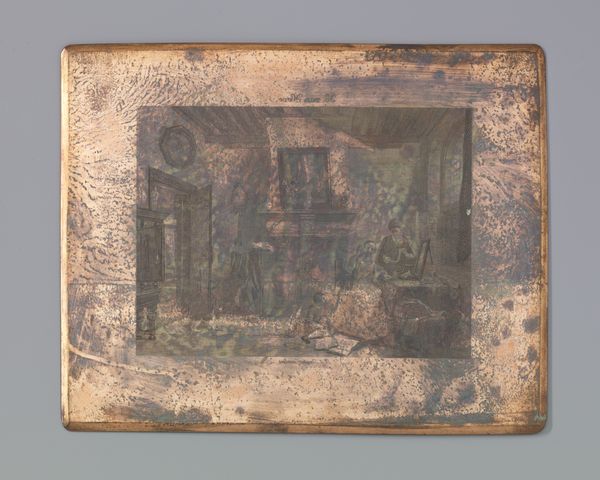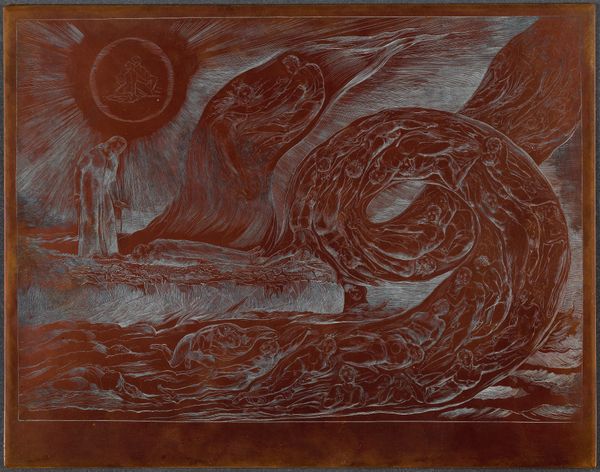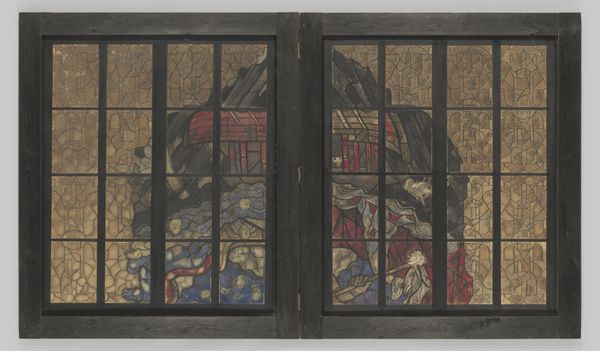
The Ending of the War, Starting Home 1933
horacepippin
Philadelphia Museum of Art, Philadelphia, PA, US
mixed-media, painting, oil-paint
mixed-media
narrative-art
painting
oil-paint
sculpture
war
landscape
figuration
oil painting
soldier
history-painting
mixed media
Dimensions 81.3 x 100.3 cm
Editor: So, this is Horace Pippin’s “The Ending of the War, Starting Home” from 1933, oil and mixed media. It feels… raw. The landscape of war is really brought home by the sculptural frame he made. How do you interpret this work, and what cultural memories does it evoke? Curator: The image and frame together serve as a powerful mnemonic device. The very symbols of warfare – grenades, helmets, even tanks – are fixed to the edges of the canvas like memories clinging to the edges of consciousness. Note how the palette within is dominated by grays, browns and muted greens; they evoke the grim realities of trench warfare. Consider how the figures blend almost seamlessly with the ravaged landscape; they’ve become part of the war. Does that suggest anything to you? Editor: It does create a sense of… stuck-ness, like the soldiers are trapped in this moment. Are those explosions stylized flowers? Curator: Precisely! The blooms become like surreal afterthoughts amidst the war, visually connecting violence and beauty to birth and destruction in the same breath. The man surrendering at the center is key; the picture becomes about trauma, and perhaps forgiveness as well. Do you notice anything about the placement of the figures? Editor: They’re emerging, moving forward, but cautiously, into… what? Is that safety? There are still explosions happening. It's ambiguous. Curator: And that's what Pippin’s imagery evokes. War doesn’t end cleanly. The frame itself is also crucial; its constructed nature speaks to a folk art tradition. It reminds us war doesn't just exist “over there,” but lives within the very objects we touch. Editor: Seeing how Pippin layers these symbols makes the experience of war seem simultaneously distant and immediate. I didn't initially see those "flowers" as explosions but they really do echo through it all, like recurring memories.
Comments
No comments
Be the first to comment and join the conversation on the ultimate creative platform.
